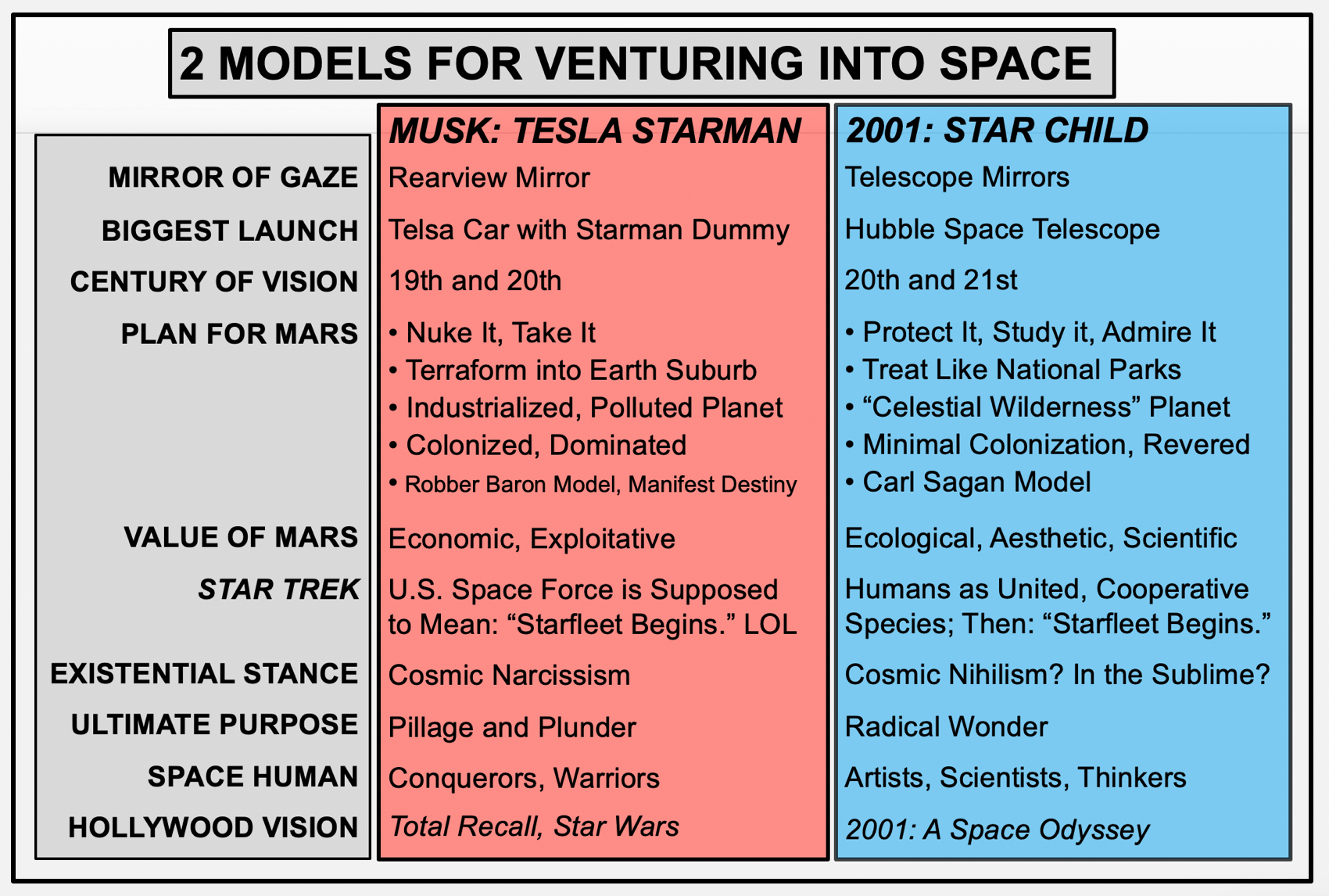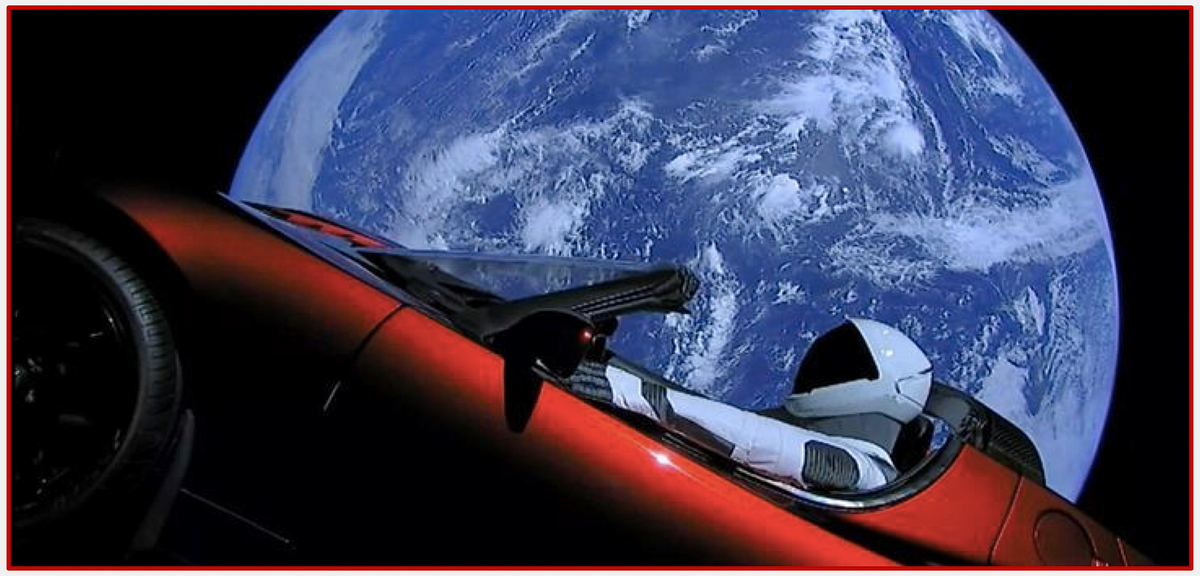Since the founding of SpaceX in 2002, Elon Musk has been viewed in popular culture as a space “visionary”—one of the billionaire pioneers to lead humanity off the planet by colonizing Mars in the 21st century. To stamp his futuristic status, Musk and his partner Grimes (the pop singer) have given their baby boy a futuristic name: X Æ A-12. That’s kinda cool and fine with me. Of course, “Elon Musk” is a cool name and so is “Tesla,” surely more futuristic than Toyota “Prius” and Nissan “Leaf.” But, is Musk really the “cool dude of the future,” especially when it comes to venturing into space? It’s more than ironic that the first thing SpaceX launched beyond Earth and into the solar system was a Tesla car piloted by the “Starman”—a dummy. Prophetic?

As best I can tell, the Starman’s eyes are locked on the rearview mirror, gazing upon a future that is past, a tomorrow that should remain as yesterday. To terraform Mars, Musk has long proposed that we launch thousands of nuclear weapons to heat the planet, melt the ice caps, and release C02, all supposedly to trigger a runaway greenhouse effect to make Mars habitable. Recent NASA studies say it’s not possible to terraform Mars with anything close to today’s technologies. Yet, Musk remains slick as teflon, still revered by legions of fanboys and fangirls. As shown in the tweet below, at least 40K of Musk’s followers love the idea of nuking Mars.
Nuke Mars T-shirt; Elon Musk tweet. Is there anything more narcissistic than nuking Mars so we can remake it into a mirror of Earth?
The Starman is in distinct contrast to the “Star Child” who appeared at the end of 2001: A Space Odyssey, Stanley Kubrick’s 1968 masterpiece of science-fiction and space philosophy. The conclusion of 2001 is open-ended, with the last monolith and the gaze of the Star Child combining to suggest that space exploration gives us the chance to create a new philosophy and destiny for the human species. Why not pick up where 2001 left off? After all, we are almost twenty years past the year “2001.”
Elon Musk is a charismatic salesman of “the future.” After all, Musk has 34 million Twitter followers and thousands quickly signed up for the Mars One colonization plan. But is this an enlightened future being sold to the world? The central question this essay poses is: why can’t art, science, and ecology be our messengers to space, the highmarks of enlightenment for our civilization?
Even though NASA says it can’t happen with today’s technology, we can pretend it might be possible to terraform Mars enough to fully colonize the Red Planet. Let’s contrast two possible models (outlined above) and see which is more enlightened and forward-thinking.
#space-exploration #science #science-fiction #space #mars
